Lake Gregory is a reservoir located in the pine forests of Crestline, California and is a local spot to hike, fish, and relax. Surrounded by Lake Gregory Regional Park, the area has changed a lot over the years and has gone from a flat to a sawmill and eventually a lake. Let’s get to know Lake Gregory, its location, history, and all the things you can do here!
Location
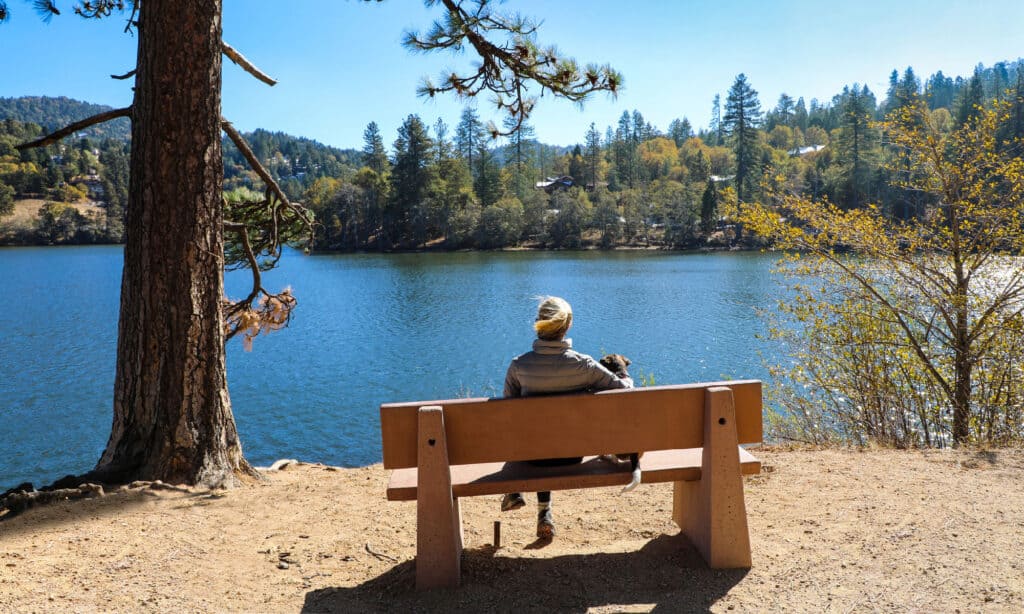
Located in the San Bernadino Mountains of California, Lake Gregory is a day-trip away from Los Angeles.
©iStock.com/Try Media
Lake Gregory is located in the San Bernardino Mountains of California, about 70 miles east of Los Angeles. The lake is part of the Lake Gregory Regional Park, which itself is found right next to the town of Crestline. By proximity, Crestline is the largest nearby town, although larger cities like San Bernadino and Riverside (both to the south), and Hesperia and Victorville (to the north) are a short drive away.
To get to Lake Gregory, the park is accessible by Highway 18, also known as Rim of the World Highway. The highway gets its name due to the extremely scenic drive it provides as it takes you align the ridge of the San Bernadino Mountains, so the drive to Lake Gregory isn’t a boring one! The lake is situated at an elevation of 4,554 feet above sea level, and like most of southern California, it has a mild climate throughout the year. Due to the higher elevation of the San Bernadino Mountains, however, the temperature is a little cooler than the surrounding valley and nearby Los Angeles.
History
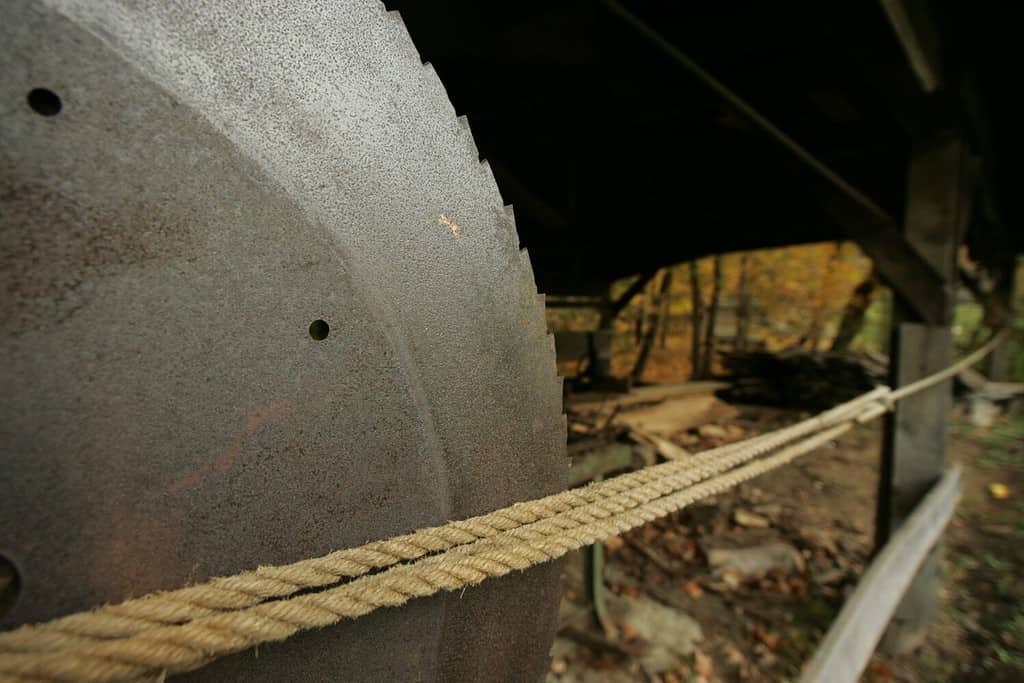
Lake Gregory was originally the location of a saw mill but was later turned into a recreation area to create jobs during the Great Depression.
©Kenneth D. Love/Shutterstock.com
As a reservoir, Lake Gregory has a relatively short history due to the nature of it being man-made. There have been a few projects and business ventures in the area, ultimately culminating into the outdoor getaway it is today.
It’s history dates back to the late 1800s when interest in the area first began. The area where the lake is now located was originally called Houston Flat, named after an early pioneering family who settled there. In 1891, however, a man named Arthur Gregory Sr. bought the land and built a sawmill to cash in on the massive quantities of timber in the San Bernadino Mountains. During that time he also built a road and a “flume” to transport the lumber down to the valley. Gregory’s sawmill operated until it was destroyed by fire in 1924, prompting him to sell the land to the Crestline Development Company.
They planned to create a resort community around a lake, but the project was delayed by the Great Depression and World War II soon after. In 1937, Gregory took back control of the land and decided to build a lake himself. He secured some federal aid from the Works Progress Administration (WPA) as a part of a New Deal initiative to help create jobs and create public works during the Depression. To make things happen, Gregory then created the Crest Forest County Water District to get water rights and permits for the lake.
Finally, the lake (or the foundation of it) was created by damming Houston Creek, a tributary of the Mojave River. The dam was completed in 1938 and tested with an initial release of water from Lake Arrowhead. After a successful test and a three-day storm in 1939, Lake Gregory was officially filled up, despite it initially being estimated it would take at least three years. The lake was named after Arthur Gregory Sr.
The lake became popular for people to visit when they wanted to escape the heat and smog of Los Angeles. From the 1940s to the present, various buildings and establishments were built around the shore, including Club San Moritz, Lake Gregory Community Church (which later burned down), and a few others.
Rumor has it that the construction equipment used to create the lake was left at the bottom of it and remains there to this day!
Size
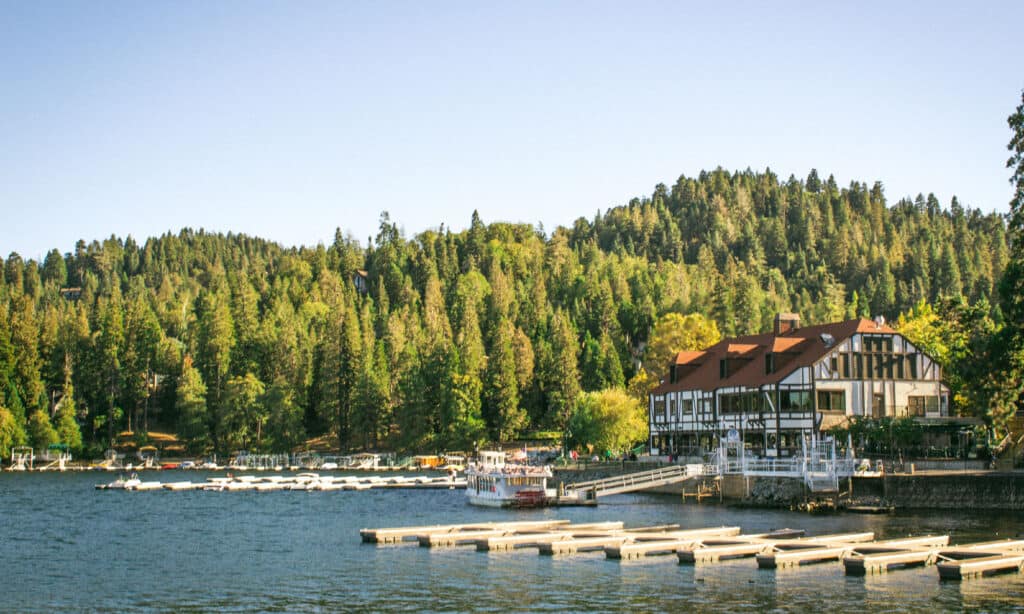
Lake Arrowhead and Big Bear Lake are significantly larger than the 84-acre Lake Gregory.
©iStock.com/Jo_Diongzon
Lake Gregory is a relatively small lake, but it still offers plenty of space for fishing, boating, and swimming. The entire park covers an area of about 150 acres, although the lake itself only covers around 84 acres.
Lake Gregory is one of the few lakes in Southern California that is not used for drinking water or irrigation but solely for recreation and wildlife. There are also around 4.3 miles of hiking and bike trails within the park.
Depth
Lake Gregory can vary depending on the dam that controls it. At its deepest point directly under the spillways, it’s estimated to be 80 feet deep, although the rest of the lake can vary. Still, 80 feet is plenty deep for most activities, and it’s able to support a variety of fish at its various depths. The depth of the lake can drastically impact the temperature and clarity of the water, which in turn affects the fish and plant growth, so it’s monitored. A dry lake would likely mean that the nearby tourist towns would also dry up! Lake Gregory is a shallow lake compared to Lake Arrowhead, which has a maximum depth of 185 feet.
“If this water dried up because of a big earthquake this town would dry up. You have to deal with inconvenience to make things better.”
Ron Driscoll of Crestline
Fishing
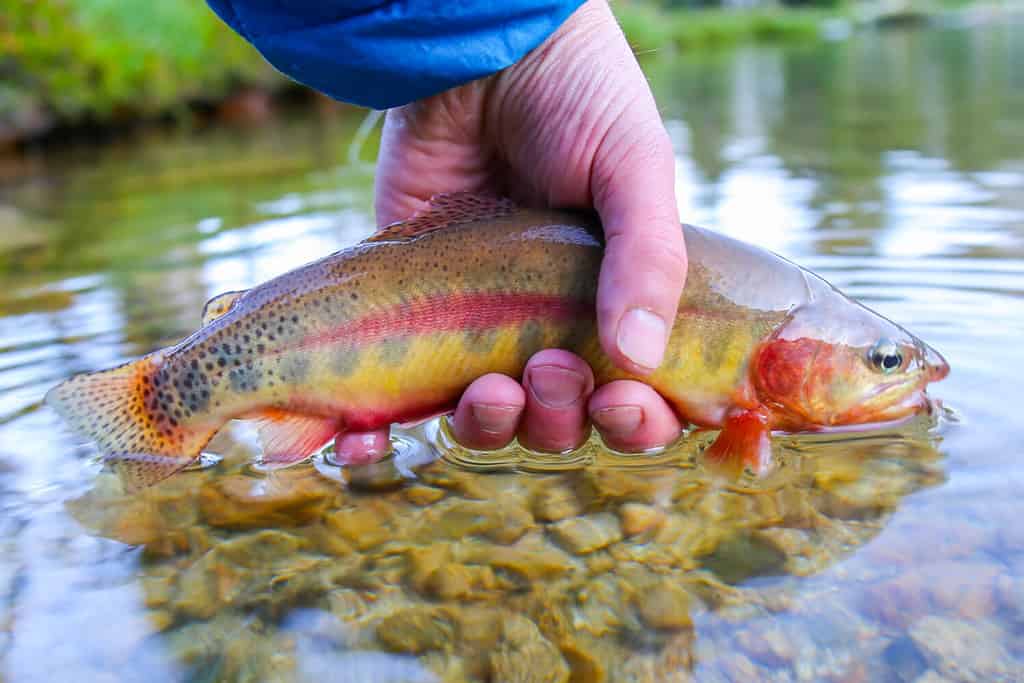
Trout,
catfish
, and bass are popular sportfish in Lake Gregory.
©CSNafzger/Shutterstock.com
Lake Gregory is easily one of the best places for fishing in the area. The two primary game fish in the lake are trout and catfish, both of which are stocked throughout the year. Trout are more active in the cooler months, while catfish are more abundant in the warmer months, so plan accordingly. The lake is regularly stocked with both types of fish by the California Department of Fish and Wildlife and the San Bernardino County. According to them, the lake receives 1550 lbs of golden and rainbow trout throughout the spring and fall and 4500 lbs of catfish in the summer. In 2023, for example, catfish were stocked:
- June 23rd – 1,500 lbs.
- July 21st – 1,500 lbs.
- August 18th – 1,500 lbs.
The lake’s south shore is a well-known fishing spot and the most frequented by fishermen. It has a few fishing amenities, including a bait shop. The south shore also has a beautiful view of the lake and the mountains. The north shore is less crowded, but also has some good fishing spots along the shoreline and near the dam, but some of the nearby beaches are private for the club.
To fish at Lake Gregory, you need to have two things: a valid California fishing license and a Lake Gregory fishing pass. The fishing pass costs $10 for a day or $89 for a year and can be purchased online or at the park office.
It is important to note that there is currently a fishing advisory for Lake Gregory from the OEHHA due to unsafe levels of mercury.
The most common species of fish are:
- Rainbow trout
- Catfish
- Bluegill
- Perch
- Crappie
- Carp
- Black bass species
Geology
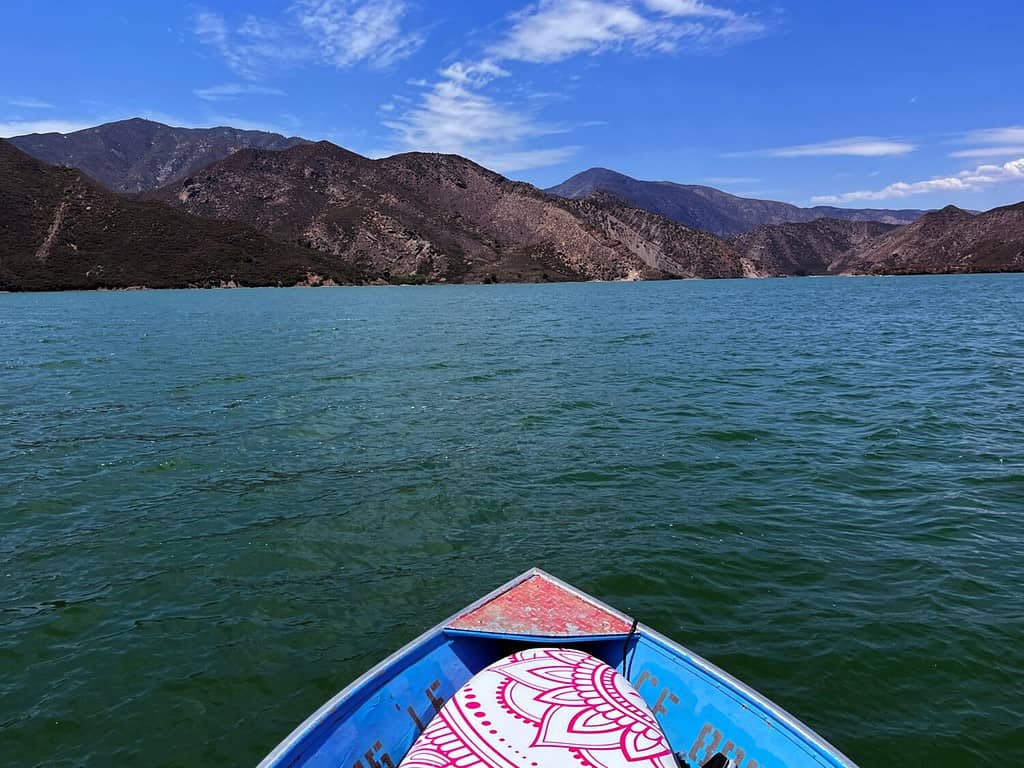
The San Bernadino Mountains are the primary geological feature of the region surrounding Lake Gregory.
©thomaslabriekl/Shutterstock.com
Lake Gregory is a man-made lake in the San Bernardino Mountains, a well-known mountain range in Southern California, and a common getaway for people in Los Angeles and the surrounding area. The San Bernardino Mountains are part of the Transverse Ranges, a series of mountain chains that run across the state perpendicular, from east to west. The Transverse Ranges were formed like most mountains were, primarily by tectonic forces. The tectonic plates meet at the San Andreas Fault, a major boundary between the North American and Pacific Plates (and part of the reason the area is so well-known for earthquakes. The plates caused the mountains to rise and rotate about 11 million years ago.
Lake Gregory was created in 1938 by damming Houston Creek, a tributary of the Mojave River. The dam was built by the WPA and named after Arthur Gregory Sr., who owned and operated a sawmill in the area. The lake is fed by Houston Creek, which itself is a tributary of the Mojave River. The Mojave also feeds (via tributaries) Lake Arrowhead to the northeast.
Other major lakes in the region include Lake Arrowhead, Big Bear Lake, Green Valley Lake, and Silverwood Lake, all lakes that are situated in the same geological region as Lake Gregory in the San Bernadino Mountains.
Boating and Activities
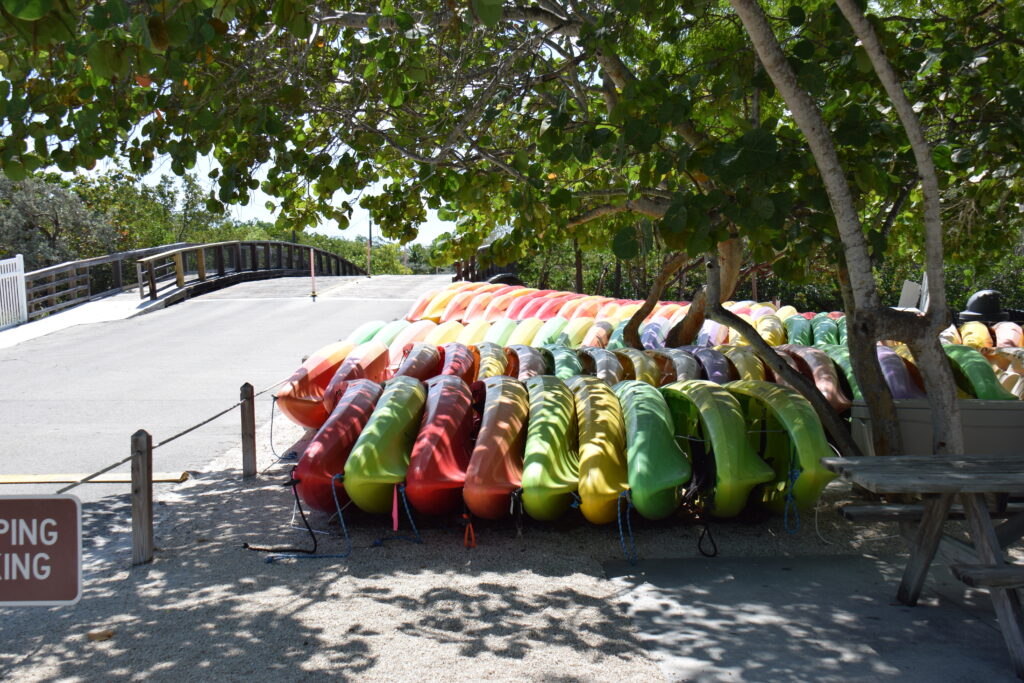
Only non-powered boats are allowed on Lake Gregory. You can either bring your own or use a nearby rental.
©dlsdds/Shutterstock.com
When it comes to activities, Lake Gregory pretty much has it all (provided you get a pass for it, which they are quite stringent about).
Boating
The lake allows boating, but they are required to be non-motorized, like a kayak, canoe, or paddleboard. If you want to launch yourself, they offer a pass ($10 a day), but they also offer boat rentals that don’t require a launching pass. The lake has different types of boats available for rent:
- kayaks
- canoes
- stand-up paddle boards
- rowboats
- pedal boats (one is even in the shape of a swan)
- 10-person Duffy boats
Water Park
The water park isn’t a traditional water park on land, but a collection of inflatables on the water in a specific region of the lake. The water park includes a splash pad, water slides, and islands, plus a large water slide that comes off the shore. The water park activities require an all-access day pass, which also includes beach access. The all-access day pass costs $30 per day and can be purchased online or at the park office.
Sports and Wildnerness
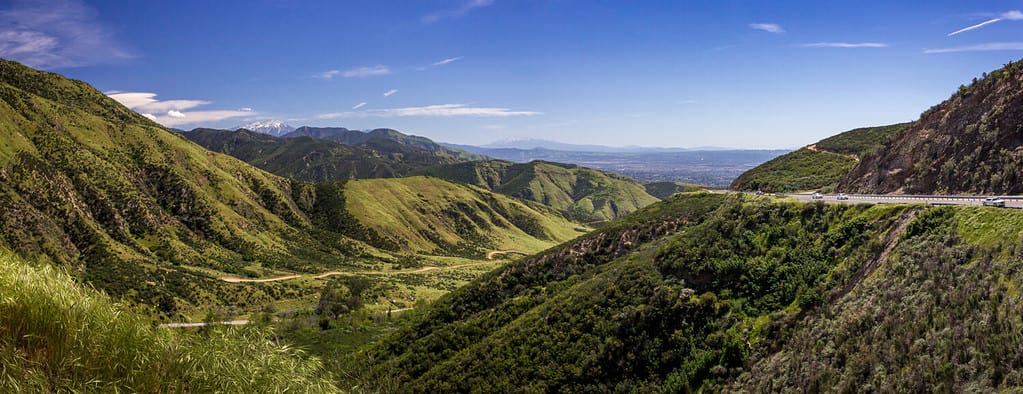
The San Bernadino Mountain range offers some beautiful hiking.
©Andy Konieczny/Shutterstock.com
Situated in the mountains, the lake also has the standard trappings that you would expect from any mountain-area resort or part.
The major options are hiking, biking, skating, and sports (including tennis, a skate park, and a few others). The lake has a 2.3-mile nature trail loop that circles the lake, plus a dog park (dogs aren’t allowed on the beach itself, only in select areas around the lake).
Camping
While there aren’t any places to camp immediately next to Lake Gregory, there are a few locations in the mountains surrounding the area:
- North Shore Family Campground is located 3 miles from Lake Arrowhead Village and 20 minutes from Lake Gregory.
- Dogwood Family Campground is located 4 miles from Lake Arrowhead Village and 25 minutes from Lake Gregory.
- Silverwood Lake State Recreation Area is located 15 miles from Lake Gregory and offers access to Silverwood Lake, but a day-trip over to Lake Gregory isn’t too far.
The photo featured at the top of this post is © iStock.com/Try Media
Thank you for reading! Have some feedback for us? Contact the AZ Animals editorial team.







